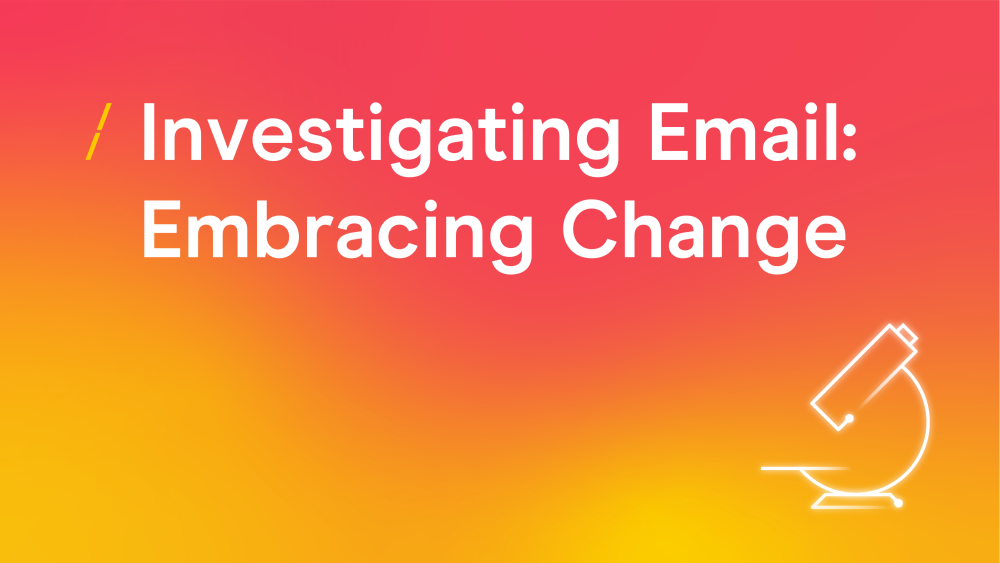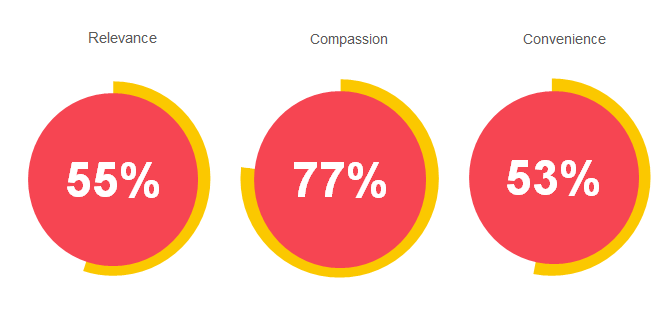Investigating Email: Embracing Change
30 Apr 2021

Sometimes a sudden and prolonged pause offers an opportunity for change to take centre stage.
We have all had to adapt to new ways of living and interacting over the past 12 months. This has significantly changed the relationship between consumers and brands, particularly the marketing messages the latter send.
Different daily schedules, less time spend commuting and working from home has made brands reconsider their go-to email send times. This step has been key to ensuring emails are top-of-inbox when subscribers are most likely to engage.
In our Consumer Email Tracker 2021, we found increased use of desktop/laptop devices (64%) that now, and for the first time in years, run in parallel with smartphones (62%).
Will these trends stay or leave with the pandemic? Considering how both businesses and employees have adapted to the new working modalities, we believe the recently acquired flexibility will stay and possibly push marketers to offer further support to hybrid homeworkers.
Already a number of companies, such as Spotify, have announced they will implement Working From Anywhere (WFA) programmes, which will bring consumers to work not only from their home but maybe even on holiday – literally, anywhere.
In this article, I will dig into both the channels and changes in content consumers prefer highlighting some of the challenges brands had to face during the pandemic.
Channel – Email behaviour is not linear
Together with the Email Council’s Research Hub, there have been many discussions around what has been called the ‘email halo effect’ – the power email has beyond the immediate ‘click’ effect and its ability to boost the other marketing channels.
Despite findings demonstrating that clicking on the link (25%) is still the most popular response among customers, other actions are equally popular among customers that can be triggered by the email itself. Ultimately, this means that email programmes should make these alternative actions as frictionless as possible.
In general, as businesses had to shift to adapt to a predominantly digital environment, during the last year we saw a massive boost in the use of all digital channels.
The latest figures from JICMAIL for Q3 2020 reveal that even mail has had an impact as an effective trigger for digital campaigns and engagement. Indeed, 8.7% of all advertising mail – including Direct Mail, Door Drops and Business Mail, prompted recipients to visit the brand’s website (up from 6.5% for the same period a year ago).
Content – Relevance and compassion
Relevance and compassion. The two factors that have characterised and reshaped the relationship consumers have with brands and their marketing messages.
Usually, when we ask customers what they value the most from a marketing email, the most common answer is discounts, offers, or other freebies. Who does not like something for free?
However, in 2020 this has changed: ‘Relevant to me’ (55%) surpassed ‘Contain offers’ (53%) bringing relevance to become the leading reason they like brand emails.
Indeed, the pandemic has created strong demand for useful information - changes in trading hours, return policies, actions brands have undertaken to make sure that both consumers and stuff could have been safe and protected.
Another defining data insight that is relevant to the re-definition of the relationship between customers and brands is the request for compassion.
In our latest Customer Engagement report, we found that consumers request and appreciate brands’ who have been able to show compassion throughout the year – both on a personal level (52%) and, more broadly, towards key societal issues (58%). Most consumers (77%) agreed that brands should show compassion – 66% want brands to communicate how they are helping customers and 58% want to know how they are supporting their staff.

Email, the channel consumers seem to like the most across the whole customer journey (70%), has successfully embraced these two factors, and shifted towards more informational content delivered with what has been felt like a more empathetic tone of voice.
In 2020, email was able to make that extra step to support people going through challenging times. In 2021, marketers may need to continue to embrace change as the marketing landscape continues to evolve too.
If you wish to find out more, have a look at our latest reports: